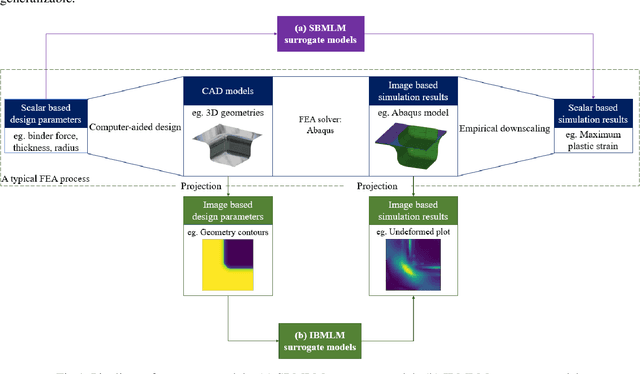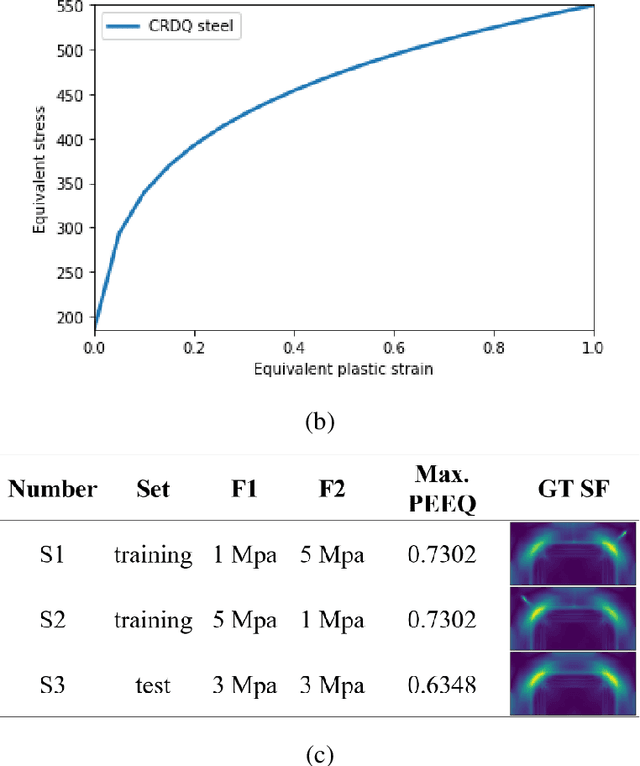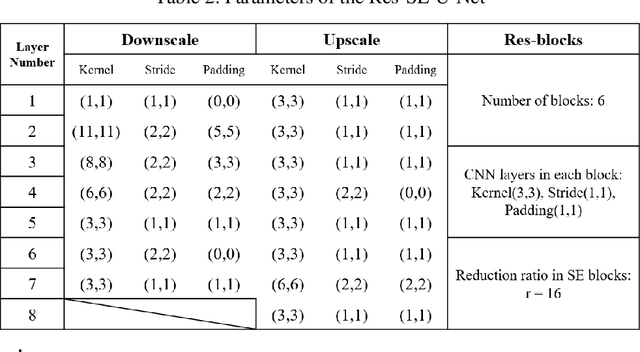Haosu Zhou
Image-based Artificial Intelligence empowered surrogate model and shape morpher for real-time blank shape optimisation in the hot stamping process
Dec 01, 2022Abstract:As the complexity of modern manufacturing technologies increases, traditional trial-and-error design, which requires iterative and expensive simulations, becomes unreliable and time-consuming. This difficulty is especially significant for the design of hot-stamped safety-critical components, such as ultra-high-strength-steel (UHSS) B-pillars. To reduce design costs and ensure manufacturability, scalar-based Artificial-Intelligence-empowered surrogate modelling (SAISM) has been investigated and implemented, which can allow real-time manufacturability-constrained structural design optimisation. However, SAISM suffers from low accuracy and generalisability, and usually requires a high volume of training samples. To solve this problem, an image-based Artificial-intelligence-empowered surrogate modelling (IAISM) approach is developed in this research, in combination with an auto-decoder-based blank shape generator. The IAISM, which is based on a Mask-Res-SE-U-Net architecture, is trained to predict the full thinning field of the as-formed component given an arbitrary blank shape. Excellent prediction performance of IAISM is achieved with only 256 training samples, which indicates the small-data learning nature of engineering AI tasks using structured data representations. The trained auto-decoder, trained Mask-Res-SE-U-Net, and Adam optimiser are integrated to conduct blank optimisation by modifying the latent vector. The optimiser can rapidly find blank shapes that satisfy manufacturability criteria. As a high-accuracy and generalisable surrogate modelling and optimisation tool, the proposed pipeline is promising to be integrated into a full-chain digital twin to conduct real-time, multi-objective design optimisation.
A study on using image based machine learning methods to develop the surrogate models of stamp forming simulations
Sep 30, 2020



Abstract:In the design optimization of metal forming, it is increasingly significant to use surrogate models to analyse the finite element analysis (FEA) simulations. However, traditional surrogate models using scalar based machine learning methods (SBMLMs) fall in short of accuracy and generalizability. This is because SBMLMs fail to harness the location information of the simulations. To overcome these shortcomings, image based machine learning methods (IBMLMs) are leveraged in this paper. The underlying theory of location information, which supports the advantages of IBMLM, is qualitatively interpreted. Based on this theory, a Res-SE-U-Net IBMLM surrogate model is developed and compared with a multi-layer perceptron (MLP) as a referencing SBMLM surrogate model. It is demonstrated that the IBMLM model is advantageous over the MLP SBMLM model in accuracy, generalizability, robustness, and informativeness. This paper presents a promising methodology of leveraging IBMLMs in surrogate models to make maximum use of info from FEA results. Future prospective studies that inspired by this paper are also discussed.
 Add to Chrome
Add to Chrome Add to Firefox
Add to Firefox Add to Edge
Add to Edge